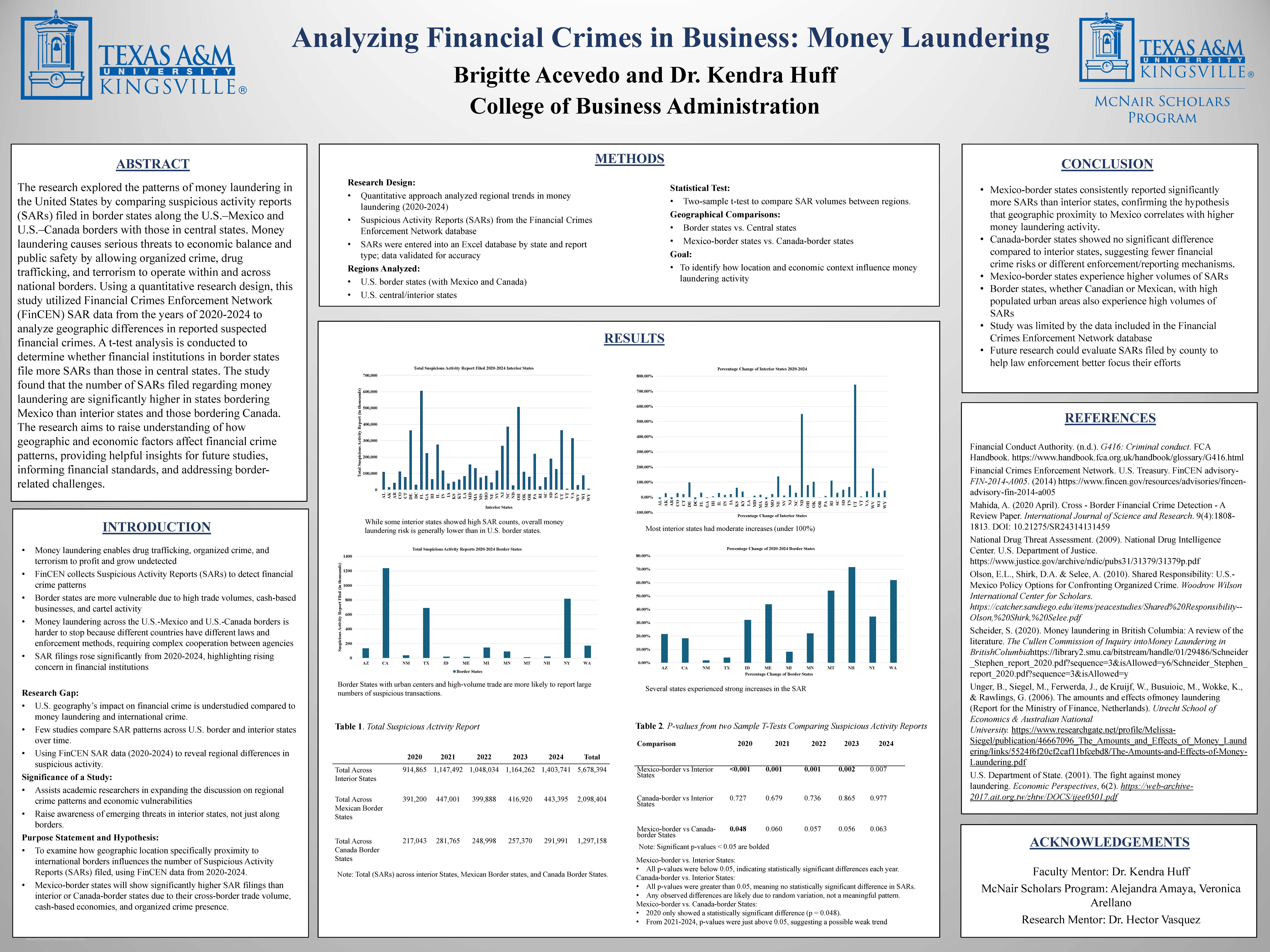The research explored the patterns of money laundering in the United States by comparing suspicious activity reports (SARs) filed in border states along the U.S.–Mexico and U.S.–Canada borders with those in central states. Money laundering causes serious threats to economic balance and public safety by allowing organized crime, drug trafficking, and terrorism to operate within and across national borders. Using a quantitative research design, this study utilized Financial Crimes Enforcement Network (FinCEN) SAR data from the years of 2020 to 2024 to analyze geographic differences in reported suspected financial crimes. A t-test analysis was conducted to determine whether financial institutions in border states file more SARs than those in central states. The study found that the number of SARs filed regarding money laundering are significantly higher in states bordering Mexico than interior states and those bordering Canada. The research aimed to raise understanding of how geographic and economic factors affect financial crime patterns, providing helpful insights for future studies, informing financial standards, and addressing border-related challenges.
Faculty Mentor: Dr. Kendra Huff
Department of Accounting and Finance


